Mushroom identification and/or mushroom hunting like many hobbies is riddled with opinions and myths. One frequent myth that I encounter on mushroom identification forums is that you should avoid blue staining boletes.
When it comes to mushroom identification Boletes are not a group that I recommend for beginners. As your experience grows this group of mushrooms offers both a fabulous study as well as a wide variety of edible species. It also offers very few poisonous members or at least few to a level that would kill you. Although some reports of multiday stomach upset, and pain certainly cause caution. In many cases the mushrooms are simply inedible due to poor flavor or extreme bitterness. Some of these will really make you cringe while others offer a delectable addition to any meal.
So, the truth of the matter is that there are many boletes that stain blue and are edible to varying degrees. Today we are simply going to look at four that are considered by many to be choice edible mushrooms. This is not an article for mushroom identification simply a brief overview of a few edible mushrooms.
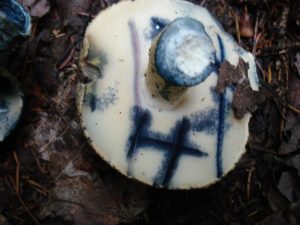
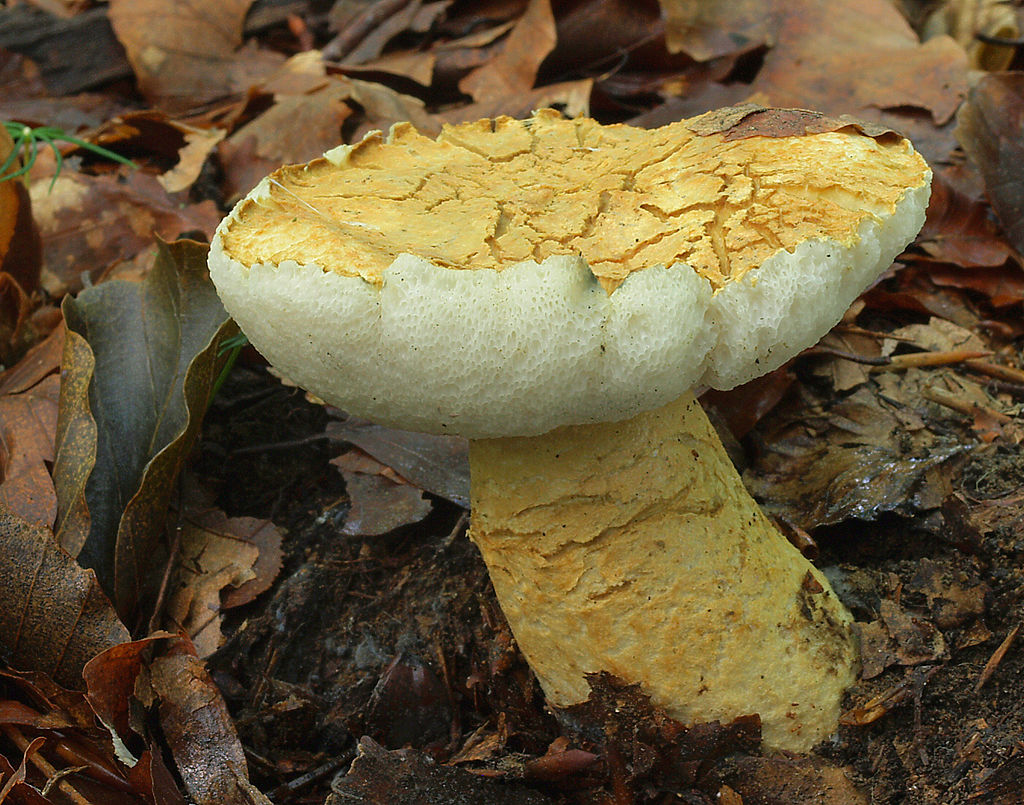
- Gyroporus Cyanescens or Bluing Bolete
Also called the Cornflower Bolete it is found from Quebec to Florida and overseas in Asia, Europe, and Australia. This choice edible is easily identified against similar species by its yellow color and nearly instant blue staining. A great feature of this mushroom is that it is resistant to bugs. On the other side of the coin, it likes sandy soil making it difficult to clean. You will find it growing singly or scattered on the ground in deciduous and mixed forests along roadsides or wood edges. It seems to prefer birch and poplar typically fruiting during the summer and autumn months.
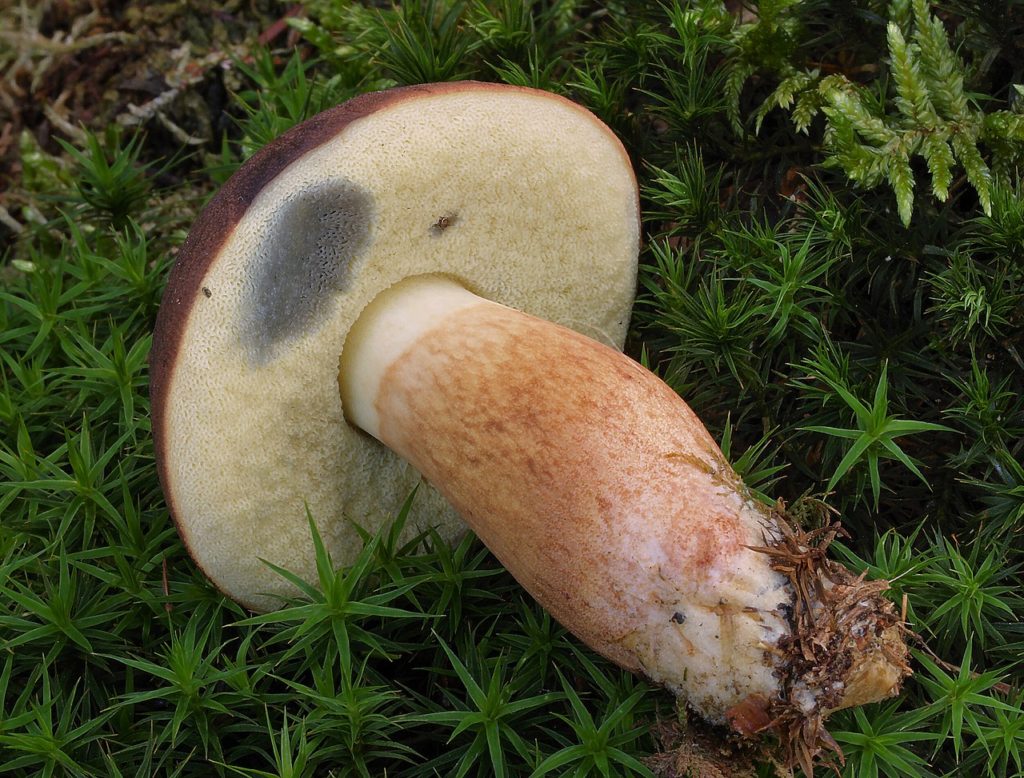
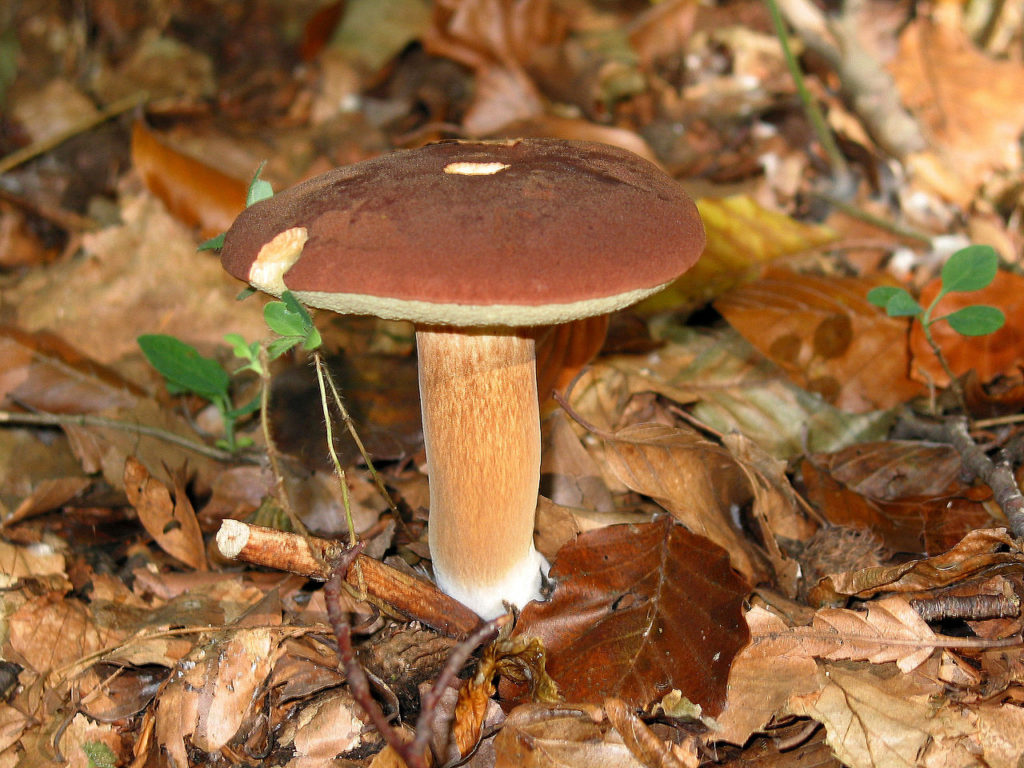
- Imperial Badia or Bay Bolete
This choice edible wild mushroom is sold in markets in Europe and Mexico and is popular with chefs. It is found throughout Asia, Europe, and North America. It prefers coniferous forest but can be found in mixed forest as well. Typically found both on the ground and on decaying stumps. It will appear singly or in groups, occasionally in large numbers. Look for it from August through November. This is another edible Bolete that seems to have some resistance to bugs enhancing its appeal. The staining of this one can be faint and will fade back to original color over time. This one can be confused with the with Boletus Projectellus which is similar in appearance to some degree. Fear not as this is also an edible Bolete although not considered choice.
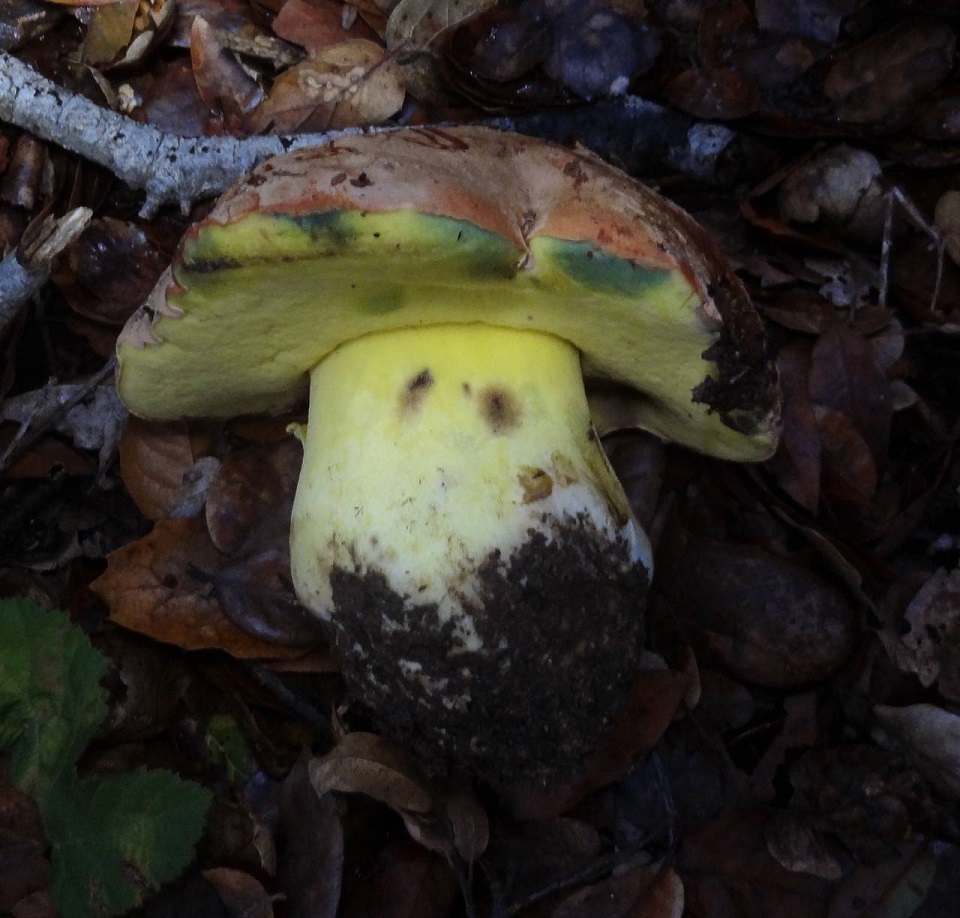
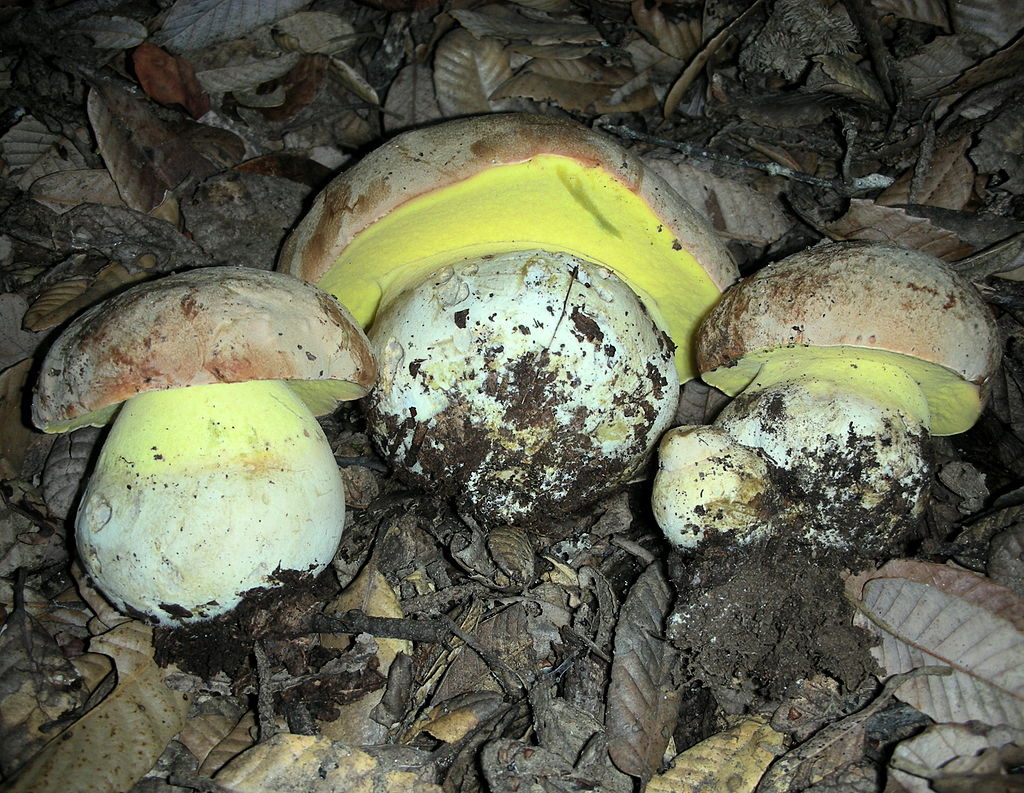
- Butyriboletus Persolidus or Butter Bolete
Recognizable by its short, fat, yellow stem the butter bolete is another choice edible that stains blue. This has recently been moved from the boletus genus to Butyriboletus however for the average person looking for dinner in the woods we will include it in this group. There are actually a few different butter boletes and they are known for their firm and appealing texture. Found in hardwood forests with a particular fondness to oaks. These wild gems are a bit more uncommon making them popular at local markets in Asia, Europe, Northern Africa, and North America
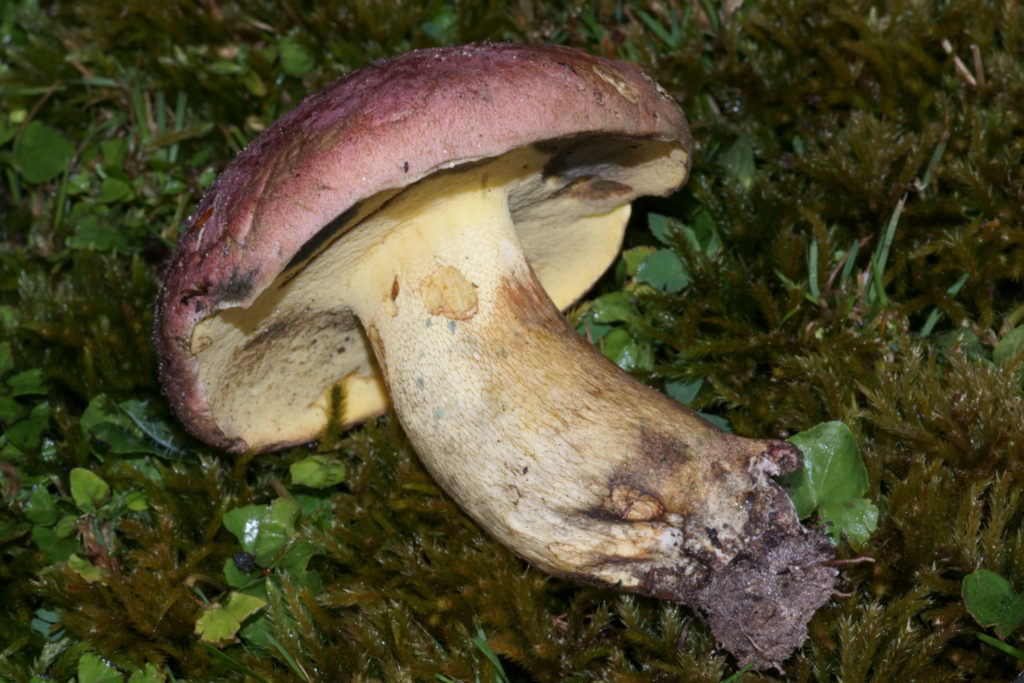
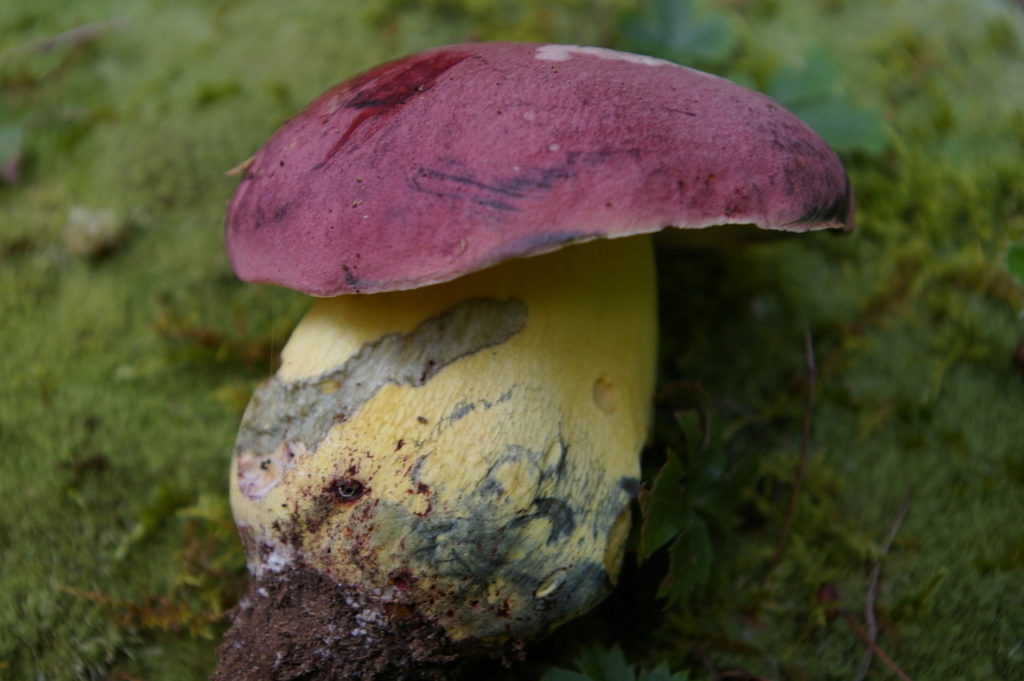
- Butyriboletus Roseopurpureus
Another recent transfer to the to the genus Butyriboletus this blue staining mushroom can be found throughout the US and primarily across the eastern US. Look for a pinkish to purple cap with yellow flesh that blues quickly then fades. It typically has a strongly netted yellow stem that instantly stains dark blue. It can also be a bit reddish by the base. The smell is fragrant, and taste is a little like sour lemon. Look for it in hardwood forests particularly around red oaks.
For today’s discussion I focused on these four mushrooms due to their status as choice edibles. However, there are many other blue staining boletes that are edible including, Pulchroboletus rubricitrinus, Baorangia Bicolor, Boletellus Chryenteroides, Boletus Luridellus, and Hortiboletus Campestris just to name a few. These and many others are considered fair or good edibles by many.
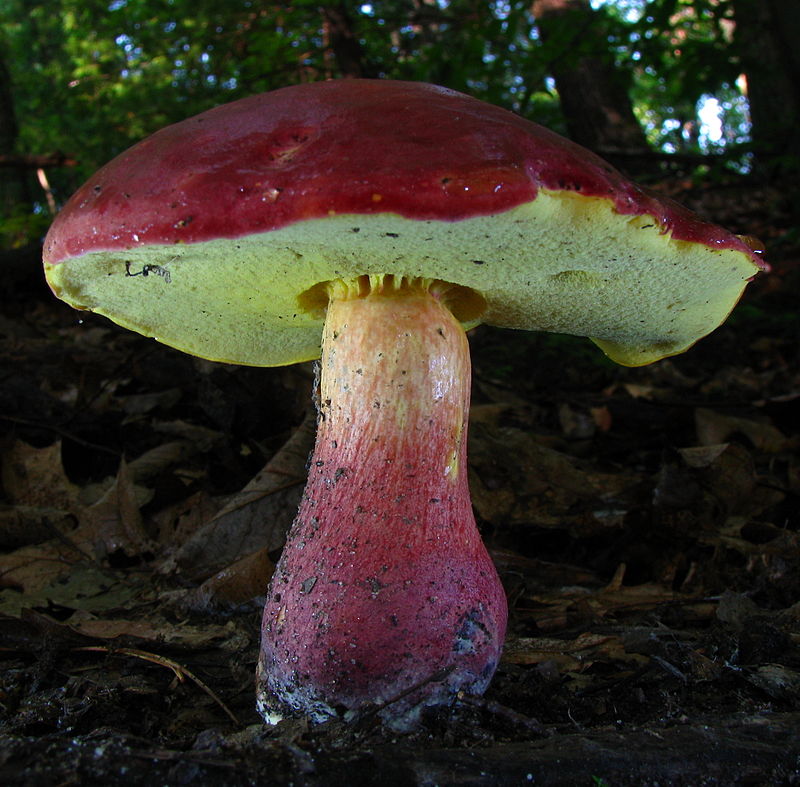

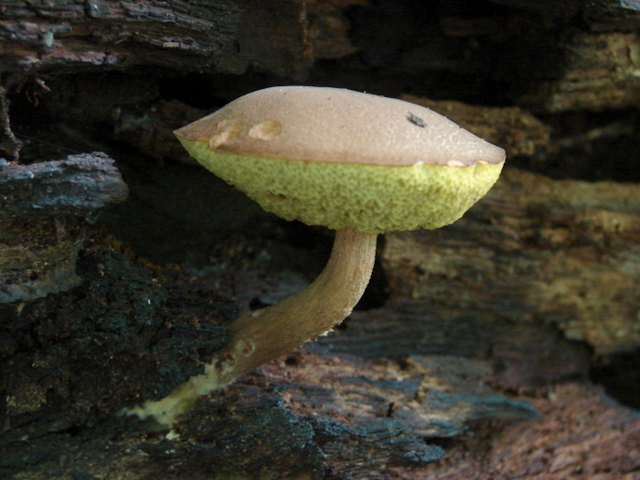
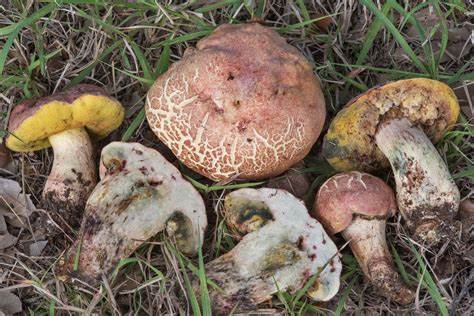
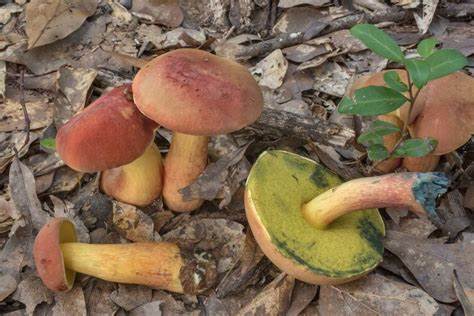
When it comes to edibility it is also important to remember that like any food’s opinions vary. What one considers a good edible another may not like. Also, when trying new bolete mushrooms for the first time it is very important to sample a very small amount first then wait a day. This is simply to ensure that you have no allergic reaction to the mushroom.
Preparation and storage of boletes is quite easy. Slice the caps like you would a store-bought mushroom and sauté however you like. Or you can add then to stews, soups, and chilis. My preferred method of storage is to slice and dehydrate them. Store them in a mason jar to use throughout the year. Simply heat up some water and soak for about twenty minutes to re-hydrate.
Bolete mushrooms and their varying close cousins are a wonderful and often abundant wild edible mushroom and one of my favorites to hunt for. However, like any other mushroom you must be sure to properly Identify before eating. Although in most cases no permanent harm will come you may wish it would for a few days until your stomach recovers.
I always adhere to my rule of never using the phrases I think, I believe, or I am pretty sure before eating wild edible mushrooms or plants. With this rule in place, I can say that I have never had a bad bolete experience. Never eat and wild mushroom or plant without properly identifying it and when in doubt ask a local expert. Considering I have eaten boletes in quantity from Alaska to Florida, that is a pretty good success story!
Edible Mushroom Foraging Guides
- The National Audubon Society Field Guide to Mushrooms
- This is definitely my go to resource for wild mushroom identification and discovery. It is well illustrated, easy to review, and has great photos. This field guide covers 703 species and has notes on many more. On top of that it has 762 full color photographs plus many black and white illustrations. This guide fits in my backpack and is one I can take with me on longer hikes.
- Simon & Schuster’s Guide to Mushrooms
- Another go to recourse for me and also one that I can and do carry with me. This guide is very simple to navigate, clear in its layout, and includes one clear large image for each mushroom. It uses great symbology that is easy to understand. For example, a one or two fork rating for edibility, red plus and green x’s indicating inedible or poisonous. These features make this a great starter field guide for beginner mushroom foragers.
Click here for more mushroom identification guides